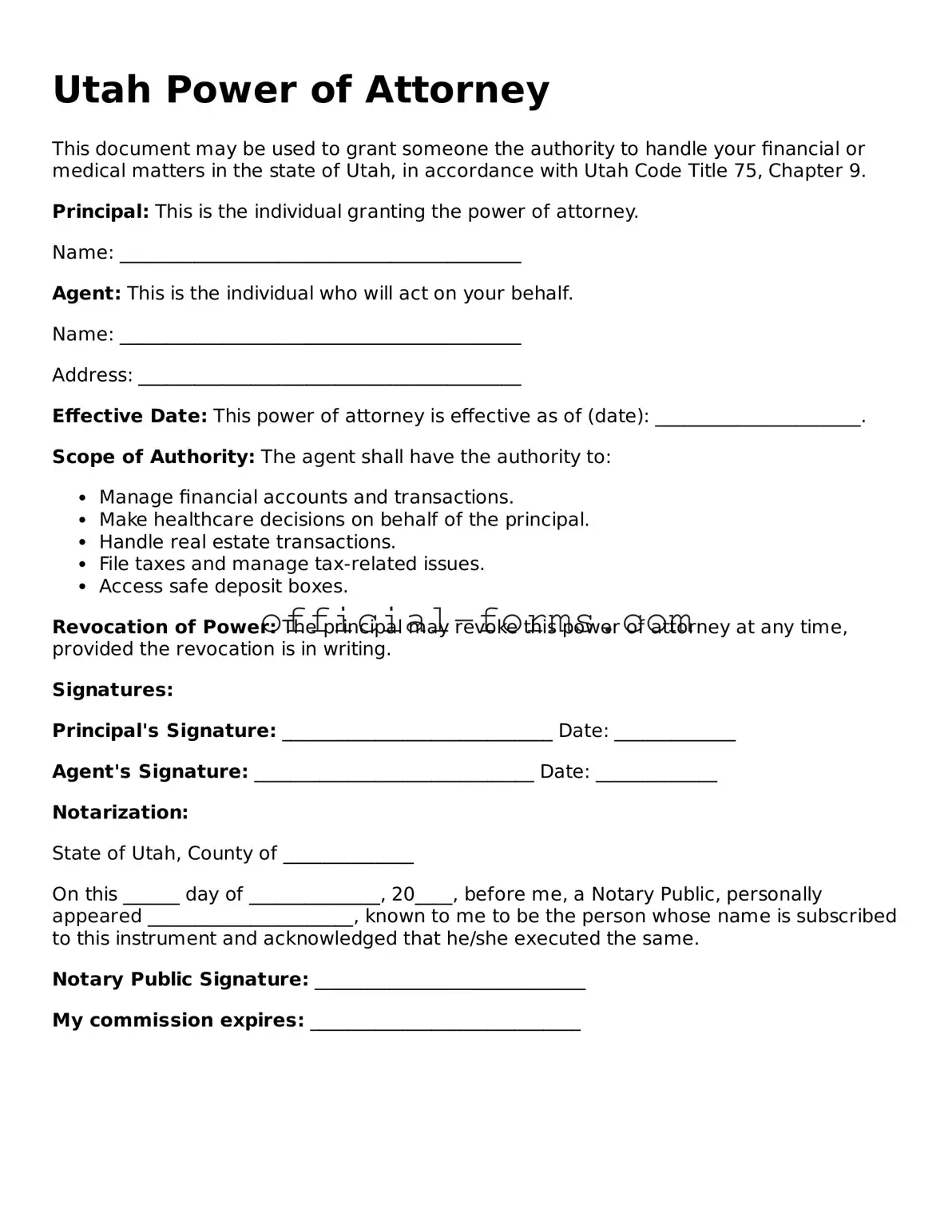Filling out the Utah Power of Attorney form can be a straightforward process, but several common mistakes can lead to complications. One frequent error is failing to specify the powers granted. When individuals leave this section vague, it can create confusion about what actions the agent can take. Clear definitions of authority are essential to ensure that the agent can act as intended.
Another common mistake is neglecting to sign and date the form correctly. A Power of Attorney is not valid unless it is properly executed. Individuals should ensure that they sign in the designated area and include the date. Missing signatures or dates can render the document ineffective.
Many people forget to have the form notarized or witnessed when required. In Utah, certain powers may necessitate notarization to be valid. Not adhering to these requirements can lead to challenges when the agent attempts to use the document. It is important to check the specific needs for notarization based on the powers granted.
Inaccurate information about the agent can also cause issues. Providing incorrect names, addresses, or other identifying information may create confusion or disputes later on. Double-checking these details is crucial to ensure that the agent can be easily identified and contacted.
Some individuals fail to consider alternative agents. Designating a backup agent can be beneficial in case the primary agent is unable or unwilling to serve. Without an alternative, the principal may find themselves without representation when they need it most.
Another mistake is not reviewing the document after completion. It is essential to read through the entire form to catch any errors or omissions. A thorough review can prevent misunderstandings and ensure that the document reflects the principal's wishes accurately.
People often overlook the importance of discussing the Power of Attorney with the designated agent. Open communication can help clarify expectations and responsibilities. Without this discussion, the agent may be unaware of the principal's intentions, leading to potential conflicts.
Finally, some individuals do not keep copies of the signed document. It is vital to retain copies for personal records and to provide a copy to the agent. This practice ensures that everyone involved has access to the same information, which can prevent disputes and misunderstandings in the future.
